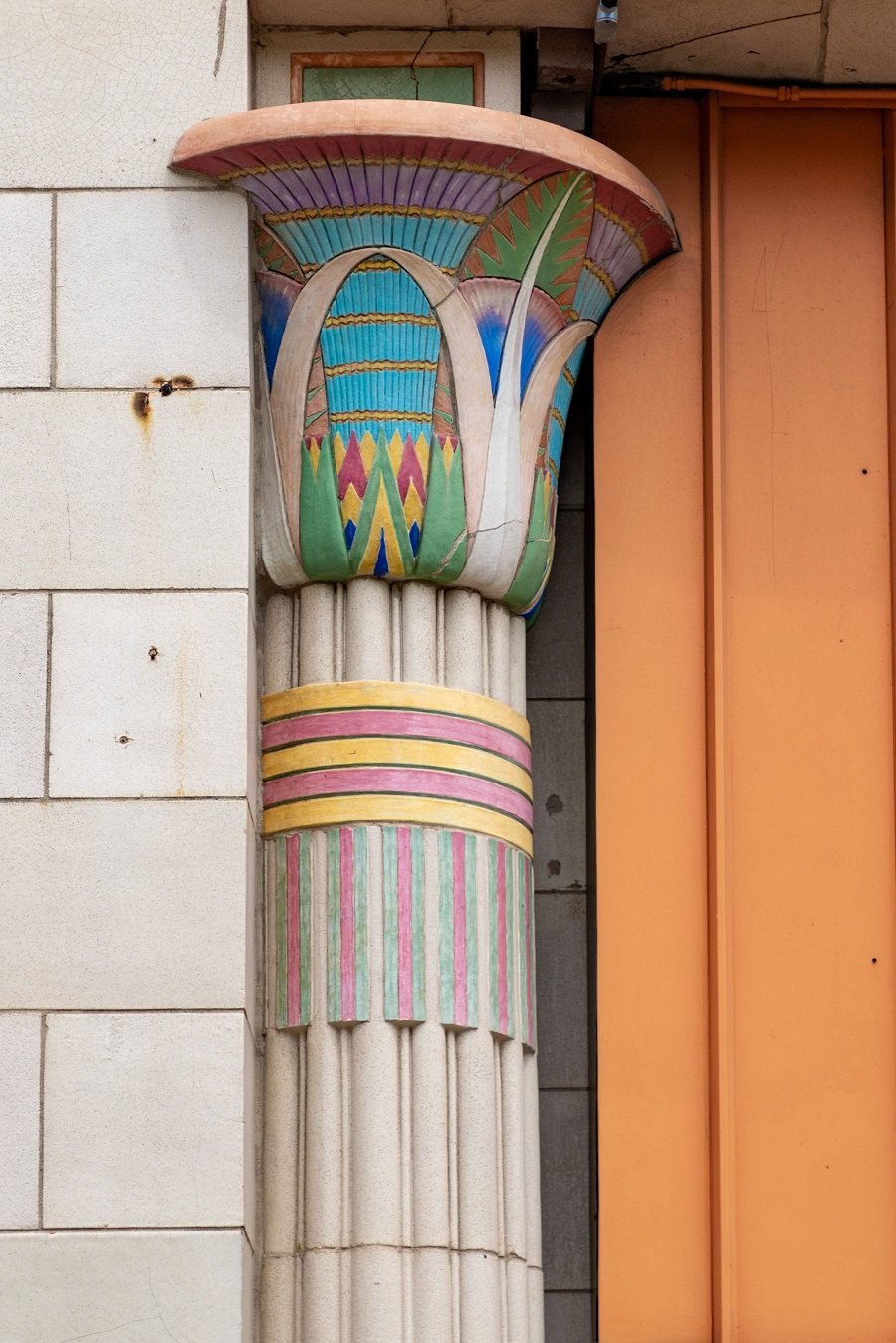#14327. Polychromatic Neo-Egyptian Column as a Decorative Facade Element

This image showcases a magnificent example of a decorative column in Egyptian style, which forms part of an architectural facade. The column represents a vivid example of the Neo-Egyptian architectural movement that was popular in the early 20th century, especially within the Art Deco style.
The capital of the column is shaped as a stylized papyrus—a traditional element of ancient Egyptian architecture, however, here it is interpreted using a vibrant polychromatic palette: we see turquoise, green, purple, yellow, and pink hues creating a visually rich composition. The column shaft is divided into three parts: an upper zone with yellow-pink horizontal bands, a middle section with vertical multicolored stripes, and a fluted lower portion.
Such facade design is a striking example of how historical architectural forms can be used with contemporary color interpretation. When designing your own home, such decorative elements can become accent points, giving the building individuality and artistic value.
The condition of the column indicates some aging and possible need for restoration, which emphasizes the importance of regular maintenance of decorative facade elements. The contrast between the bright polychromatic finish of the column and the more neutral surrounding wall creates an expressive accent in the overall composition of the building.